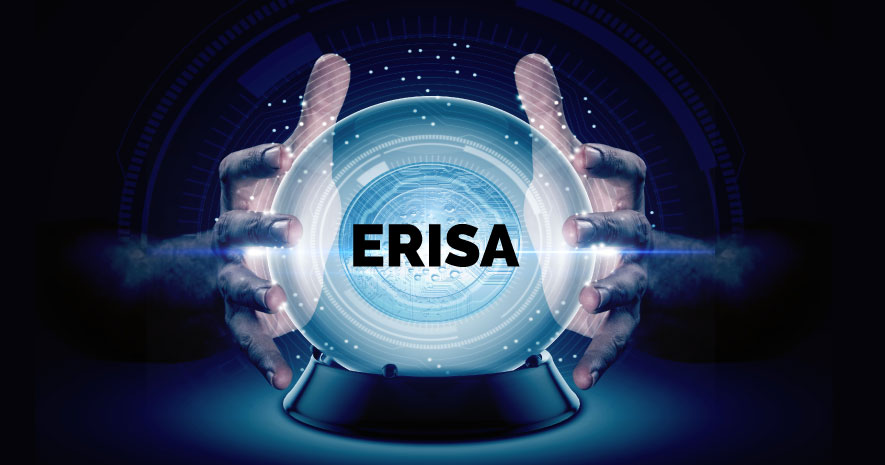Employers have spent the last two years dealing with many challenges and disruptions, and they are now looking to move forward in 2022 against a backdrop of economic and pandemic-related uncertainty and market volatility. To help plan sponsors navigate the challenging road ahead, we have outlined four themes that plan sponsors should be keeping a close eye on in 2022.
The #1 Financial Story of the Year: Inflation
You can’t go anywhere without hearing about inflation—and for a good reason. The Consumer Price Index (CPI) rose 6.8% from November 2020 to November 2021, the largest 12-month increase in nearly 40 years. But how do increases in prices for gas (up 58%), meat (up 13%), and cars (up 31%) affect retirement accounts?
For participants in defined contribution plans, these price hikes mean that their paychecks don’t go as far in covering living expenses. As a result, some participants may choose to decrease their plan contribution rates to increase the amount of take-home pay. A significant number of participants may stop contributing altogether, which could alter the plan’s fee structures. Rising prices could also lead to increases in loans and hardship withdrawals. Finally, while financial wellness plans have been in place at many organizations for some time, plan sponsors should consider whether such benefits properly address participants’ concerns about inflation.
New Strategies for Massive Shifts in the Labor Market
The coronavirus pandemic caused many companies to shut their doors and employees to work from home. As a result, the hybrid and remote work environment evolved faster than expected. In addition, there was a massive exodus from traditional 9-to-5 jobs in America. According to data from the Bureau of Labor Statistics (BLS), 6.3 million people left the workforce in November 2021 alone.
In response to the tight labor market, employers should consider a variety of strategies to attract and retain top talent. Potential solutions include stronger retirement benefits (such as matching contributions), referral bonuses, more flexible hours, remote work stipends, childcare assistance, or parental family leave and shorter work days around holiday time.
Cybersecurity Practices Draw Increasing DOL Scrutiny
Last April, the Department of Labor (DOL) released its first-ever guidance on cybersecurity best practices for fiduciaries, recordkeepers and participants. Soon after that, the DOL began conducting investigations on retirement plan cybersecurity practices. The DOL has asked for a comprehensive set of documents related to the plan’s cybersecurity or data security practices to assess cybersecurity risk and the safety of plan data. The DOL is also reviewing relationships with service providers, such as recordkeepers, attorneys, investment managers, and advisors, to ensure that they are doing their part to protect plan data.
Plan sponsors should take a proactive approach to cybersecurity in 2022, including reviewing the DOL’s guidance and comparing it to their plan operations to determine whether operational changes are required. Plan sponsors also should discuss cyber risk measures with service providers to learn about their cybersecurity protocols. In particular, plan sponsors should review whether service providers are contractually permitted to cross-sell participant data. Lastly, plan sponsors should carefully review providers’ SOC1 reports, which is an essential step to monitor service providers properly.
Growing Interest in ESOPs
We are receiving many inquiries about setting up and administering Employee Stock Ownership Plans (ESOPs), which are qualified defined contribution plans available for S corporations and C corporations. Starting in 2020, the Setting Every Community Up for Retirement Enhancement (SECURE) Act of 2019 allows employers to retroactively adopt and fund a tax-qualified retirement plan, including an ESOP, by the extended due date of the employer’s federal tax return, creating a retroactively effective tax deduction. The National Defense Authorization Act signed into law on December 27, 2021 contains the first-ever government contracting program to specifically encourage ESOPs. Section 874 of the new law creates a five-year Department of Defense pilot program that allows companies that are or become 100% ESOP-owned to receive noncompete follow-on contracts for federal government work. In addition, pending bills in Congress include provisions that may encourage more employers to pursue this structure.
ESOPs can be an attractive exit strategy for employers who want to leave their business in employees’ hands, protect their legacy and continue to influence the company’s trajectory after the transaction. The latest figures (2019) show that there are nearly 6,600 ESOPs in the U.S., covering 14 million participants with $1.7 billion in plan assets.
Insight: Do Your Homework to Hit the Ground Running in 2022
While the direct health implications of the COVID-19 pandemic continue to dominate headlines, issues created in the wake of this crisis will garner increased attention in 2022. Inflation, the rapidly changing workforce, cybersecurity, and other audit concerns are areas that plan sponsors will need to focus on in the upcoming year




